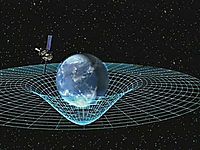
Photo from wikipedia
Abstract Freight trip generation (FTG) plays an essential role in urban planning and traffic assessments for developing long-term transportation demand modeling. This study explored the spatial interaction effects on the… Click to show full abstract
Abstract Freight trip generation (FTG) plays an essential role in urban planning and traffic assessments for developing long-term transportation demand modeling. This study explored the spatial interaction effects on the development of FTG models for intermediate and pure receiver establishment using spatial econometric techniques. FTG models are developed by considering three types of spatial interaction effects such as exogenous, endogenous, and residual spatial autocorrelation effects. Initially, the supply chain variables and demographic characteristics are collected in Tiruchirappalli city, Tamil Nadu, India. The spatial indicators for intermediate and pure receiver establishment are identified by estimating spatial autocorrection of the variables using Moran’s I method. Further, the locational information of the study area is incorporated for representing the spatial neighborhood structure in the spatial weight matrix. The spatial interaction effects are assessed using spatial econometric modeling techniques. FTG models are developed using the linear Ordinary Least Square (OLS) technique and Spatial Econometric techniques such as Spatially Lagged X model (SLX), Spatial Durbin Model (SDM), and Spatial Durbin Error model (SDEM). The developed models are compared using the Bayesian approach, and the suitable FTG model is identified to explain the spatial interaction effects in more precisely. The results show that the SDEM is the most suitable FTG model than other spatial econometric models for both intermediate and pure receiver establishment. Spatial indicators such as own effects and spillover effects associated with the SDEM are estimated and interpreted for explaining the freight trip activity. Moreover, local spatial spillover significantly recognizes the urban fright trip generation for both intermediate and pure receiver establishment.
Journal Title: Case Studies on Transport Policy
Year Published: 2021
Link to full text (if available)
Share on Social Media: Sign Up to like & get
recommendations!